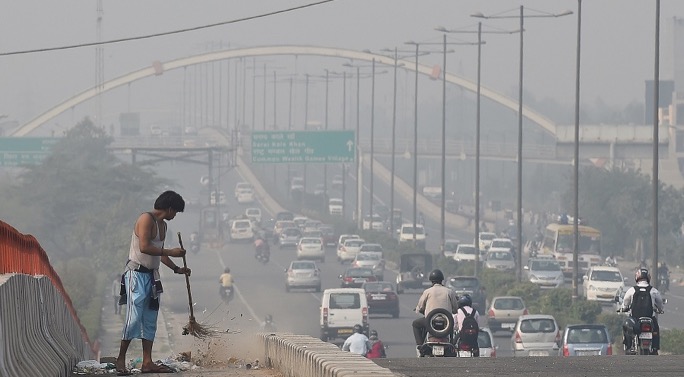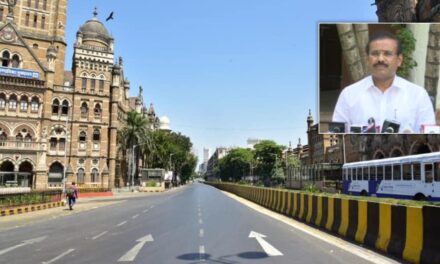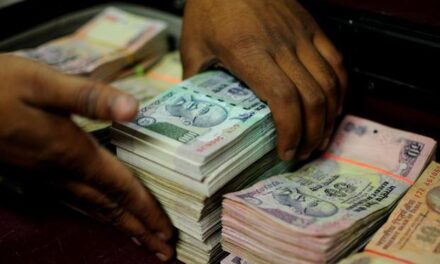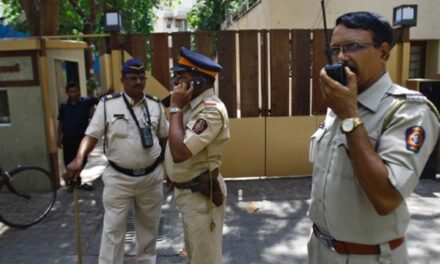
14 out of 15 most polluted cities in the world are in India: WHO report


Kanpur, Delhi and Lucknow featured among the world’s most polluted cities (Representational Image, Courtesy: PRAKASH SINGH/AFP)
A total of 14 Indian cities featured among the 15 most polluted cities in the world in terms of PM2.5 levels in 2016, data released by the WHO showed. The WHO data also said that nine out of 10 people in the world breathe air containing high levels of pollutants.
The Indian cities that registered very high levels of PM2.5 pollutants were Kanpur – most polluted Indian city – followed by Faridabad, Varanasi, Gaya, Patna, Delhi, Lucknow, Agra, Muzaffarpur, Srinagar, Gurgaon, Jaipur, Patiala, and Jodhpur.
In the list, which consisted of 20 entries, the Indian cities were followed by Ali Subah Al-Salem in Kuwait and a few cities in China and Mongolia. Mumbai, incidentally, did not feature in the most polluted cities list.
In terms of PM10 levels, 13 cities in India figured among the 20 most polluted cities of the world in 2016.
The World Health Organisation has called upon member-countries in its Southeast Asia region to aggressively address the double burden of household and ambient (outdoor) air pollution, saying the region, which comprises India, accounts for 34% or 2.4 million of the seven million premature deaths caused by household and ambient air pollution together globally every year.
Of the 3.8 million deaths caused by household air pollution globally, the region accounts for 1.5 million or 40% deaths, and of the 4.2 million global deaths due to ambient air pollution, 1.3 million or 30% are reported from the region, it said.
The PM2.5 includes pollutants like sulfate, nitrate and black carbon, which pose the greatest risk to human health.
WHO’s global urban air pollution database measured the levels of fine particulate matter (PM10 and PM2.5) from more than 4,300 cities in 108 countries, according to which ambient air pollution alone caused some 4.2 million deaths in 2016, while household air pollution from cooking with polluting fuels and technologies caused an estimated 3.8 million deaths in the same period.
Since 2016, over 1,000 additional cities have been added to WHO’s database, which shows more countries are measuring and taking action to reduce air pollution than ever before.
“WHO estimates that around 7 million people die every year from exposure to fine particles in polluted air that penetrate deep into the lungs and cardiovascular system, causing diseases including stroke, heart disease, lung cancer, chronic obstructive pulmonary diseases and respiratory infections, including pneumonia,” the report said.
According to the report, more than 90% of air pollution-related deaths occur in low- and middle-income countries (including India), mainly in Asia and Africa, followed by low- and middle-income countries of the Eastern Mediterranean region, Europe and the Americas.
“Around 3 billion people – more than 40% of the world’s population – still do not have access to clean cooking fuels and technologies in their homes, the main source of household air pollution,” it said.
It said the WHO recognises air pollution is a critical risk factor for non-communicable diseases (NCDs), causing an estimated 24% of all adult deaths from heart disease, 25% from stroke, 43% from chronic obstructive pulmonary disease and 29% from lung cancer.
The report, however, stated countries are making efforts and taking measures and in this context, referred to India’s Pradhan Mantri Ujjwala Yojana, which it said, in just two years, has provided 37 million women living below the poverty line with free LPG connections to support them to switch to clean household energy use.
India targets to reach 80 million households by 2020.
All countries in the region are making efforts to expand the availability of clean fuels and technologies, however, over 60% population do not have clean fuel. The combined effects of household air pollution and ambient air pollution become increasingly hard to address if not tackled early, Poonam Khetrapal Singh, regional director, WHO Southeast Asia, said.
“Cleaning up the air we breathe will help prevent NCDs, particularly among women and vulnerable groups such as children, those already ill and the elderly,” she added.
“Many of the world’s megacities exceed WHO’s guideline levels for air quality by more than 5 times, representing a major risk to people’s health,” Maria Neira, director of the Department of Public Health, Social and Environmental Determinants of Health at WHO, said, adding, there is an acceleration of political interest to deal with this global public health challenge.
“Air pollution threatens us all, but the poorest and most marginalised people bear the brunt of the burden. It is unacceptable that over 3 billion people – most of them women and children – are still breathing deadly smoke every day from using polluting stoves and fuels in their homes,” said Tedros Adhanom Ghebreyesus, director-general of WHO.
Major sources of air pollution from particulate matter include inefficient use of energy by households, industry, agriculture and transport sectors, and coal-fired power plants.
In some regions, sand and desert dust, waste burning and deforestation are additional sources of air pollution.












